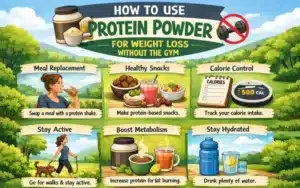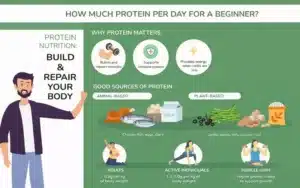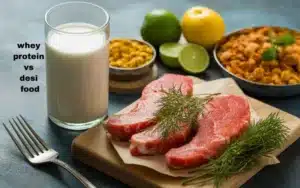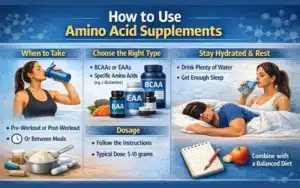No products in the cart.
Return To ShopGrass-Fed Whey Protein: Benefits, Uses & Why It’s Worth It?
Whey protein has long been a go-to supplement for fitness enthusiasts, athletes, and health-conscious individuals. But not all whey protein is created equal.
Grass-fed whey protein, sourced from cows that graze on natural pastures, is gaining popularity for its superior nutritional profile and ethical benefits. If you’re considering adding it to your diet, here’s everything you need to know.
What Is Grass-Fed Whey Protein?
Grass-fed whey protein comes from the milk of cows raised on grass-based diets, typically free from added hormones, antibiotics, or processed feeds. Unlike conventional whey, which may come from grain-fed cows, grass-fed whey is considered more natural and nutrient-rich.
Key Benefits of Grass-Fed Whey Protein
Superior Nutritional Profile
Grass-fed whey is packed with high-quality protein and a more balanced nutrient composition, including:
- Higher Omega-3 Fatty Acids: Beneficial for heart and brain health.
- Increased Conjugated Linoleic Acid (CLA): Linked to fat loss and improved metabolism.
- Rich in Antioxidants: Grass-fed cows produce milk with higher levels of vitamins A and E.
Supports Muscle Growth and Recovery
Like all whey protein, grass-fed varieties are rich in branched-chain amino acids (BCAAs) that aid in muscle repair and growth. However, the purity of grass-fed whey ensures better absorption and fewer digestive issues.
Free From Harmful Additives
Grass-fed whey is typically free of artificial sweeteners, hormones, and antibiotics. This makes it a cleaner option for individuals seeking a natural, health-focused protein source.
Ethical and Sustainable
Grass-fed cows are raised humanely and graze on open pastures, which supports sustainable farming practices and reduces environmental impact. By choosing grass-fed whey, you support ethical farming methods.
Easier to Digest
Many people report that grass-fed whey is gentler on the stomach compared to conventional whey. This is often due to the absence of additives and the higher-quality processing methods used.
How to Use Grass-Fed Whey Protein
Grass-fed whey protein is an incredibly versatile supplement that can seamlessly fit into a variety of dietary routines. Whether you’re looking to build muscle, manage your weight, or simply boost your overall nutrition, here are some practical and creative ways to incorporate it into your daily life:
Protein Shakes and Smoothies
Grass-fed whey protein is a staple in shakes and smoothies due to its convenience and quick preparation. Here’s how to make the most of it:
- Basic Shake: Mix one scoop of grass-fed whey with 8–12 ounces of water, milk, or a plant-based alternative (such as almond, oat, or coconut milk). Shake it up in a bottle or blend for a creamy texture.
- Supercharged Smoothie: Add your favorite fruits (e.g., bananas, berries, or mango), vegetables (like spinach, kale, or zucchini), and healthy seeds (chia, flax, or hemp) to create a nutrient-packed drink.
- Flavor Boosters: Incorporate natural flavors like cinnamon, vanilla extract, cocoa powder, or a touch of honey for a more enjoyable taste.
Baking and Cooking
Grass-fed whey protein isn’t limited to just drinks—it can be a powerful addition to your recipes, boosting their protein content without compromising flavor or texture.
- Protein Pancakes: Swap a portion of the flour in your pancake batter with grass-fed whey for a high-protein breakfast. Combine with bananas or oats for added nutrients.
- Protein Muffins: Bake protein-packed muffins by adding whey to your mix. Pair it with almond flour or whole-grain flour for a healthier treat.
- Homemade Protein Bars: Use grass-fed whey protein as a base for homemade protein bars. Combine it with oats, nut butter, dried fruits, and a touch of honey or maple syrup for a satisfying snack.
- Savory Dishes: While less common, unflavored whey can be added to soups, sauces, or savory batters to increase their protein content.
Post-Workout Recovery
Grass-fed whey protein is an excellent choice for post-workout nutrition due to its fast absorption and rich amino acid profile. To make the most of it:
- Simple Recovery Shake: Mix whey with water or milk for a quick, no-frills recovery drink.
- Enhanced Recovery Smoothie: Blend whey with frozen berries, Greek yogurt, and a handful of spinach for a nutrient-dense recovery option.
- Add Electrolytes: After an intense workout, mix in a pinch of sea salt or a splash of coconut water to replenish electrolytes while boosting protein intake.
Meal Replacement
When life gets busy, grass-fed whey protein can serve as a convenient and healthy meal replacement when paired with the right ingredients. Here’s how:
- Balanced Shake: Combine whey protein with a source of healthy fats (e.g., almond butter, avocado, or chia seeds) and fiber-rich ingredients (e.g., oats or flaxseeds). Blend with your choice of liquid for a filling meal replacement.
- Add Greens: For extra nutrients, add a handful of leafy greens like kale or spinach. This will increase your intake of vitamins and minerals without impacting the flavor.
- Customize for Goals: If weight loss is your goal, keep the shake lower in calories by using water or unsweetened almond milk. For muscle gain, add higher-calorie ingredients like peanut butter or full-fat milk.
Snacks and Desserts
Grass-fed whey protein can also be a great addition to your snacks and desserts for guilt-free indulgence:
- Protein Yogurt Bowl: Stir a scoop of whey into Greek yogurt and top with granola, nuts, and fresh fruit for a protein-rich snack.
- Protein Pudding: Mix whey with almond milk or coconut milk to create a creamy, pudding-like dessert. Let it chill for a few hours and enjoy with fresh berries.
- Energy Balls: Combine whey with rolled oats, nut butter, honey, and chocolate chips to form no-bake energy balls that are perfect for on-the-go snacking.
What to Look for When Buying Grass-Fed Whey Protein
When shopping for grass-fed whey protein, keep the following in mind:
- Certification: Look for products certified as “grass-fed” or carrying a reputable seal like USDA Organic.
- Ingredient List: Choose whey protein with minimal ingredients—avoid added sugars, artificial flavors, or fillers.
- Protein Source: Opt for whey protein isolate if you want higher protein content with fewer carbs and fats.
- Flavor Options: While unflavored options are the cleanest, flavored varieties should use natural sweeteners like stevia or monk fruit.
- Reputable Brand: Research the brand’s farming and production practices to ensure you’re getting a high-quality product.
Why Grass-Fed Whey Protein Is Worth It
While grass-fed whey protein might come at a slightly higher price point, its benefits justify the cost. From improved health outcomes to supporting ethical farming, it’s a smart choice for anyone looking to elevate their nutrition and fitness game.
FAQs About Grass-Fed Whey Protein
How Much Protein Should I Consume Daily?
The recommended protein intake varies by individual. For most people, 0.8-1.2 grams per kilogram of body weight is sufficient. Active individuals may require more.
What Are the Best Brands for Grass-Fed Whey Protein?
Popular brands include Naked Whey, Levels Grass-Fed Whey, and Vital Proteins. Look for customer reviews and third-party testing certifications.
Can Grass-Fed Whey Protein Help With Weight Loss?
Yes, it can support weight loss by promoting satiety, preserving muscle mass during calorie deficits, and boosting metabolism.









Add comment
You must be logged in to post a comment.